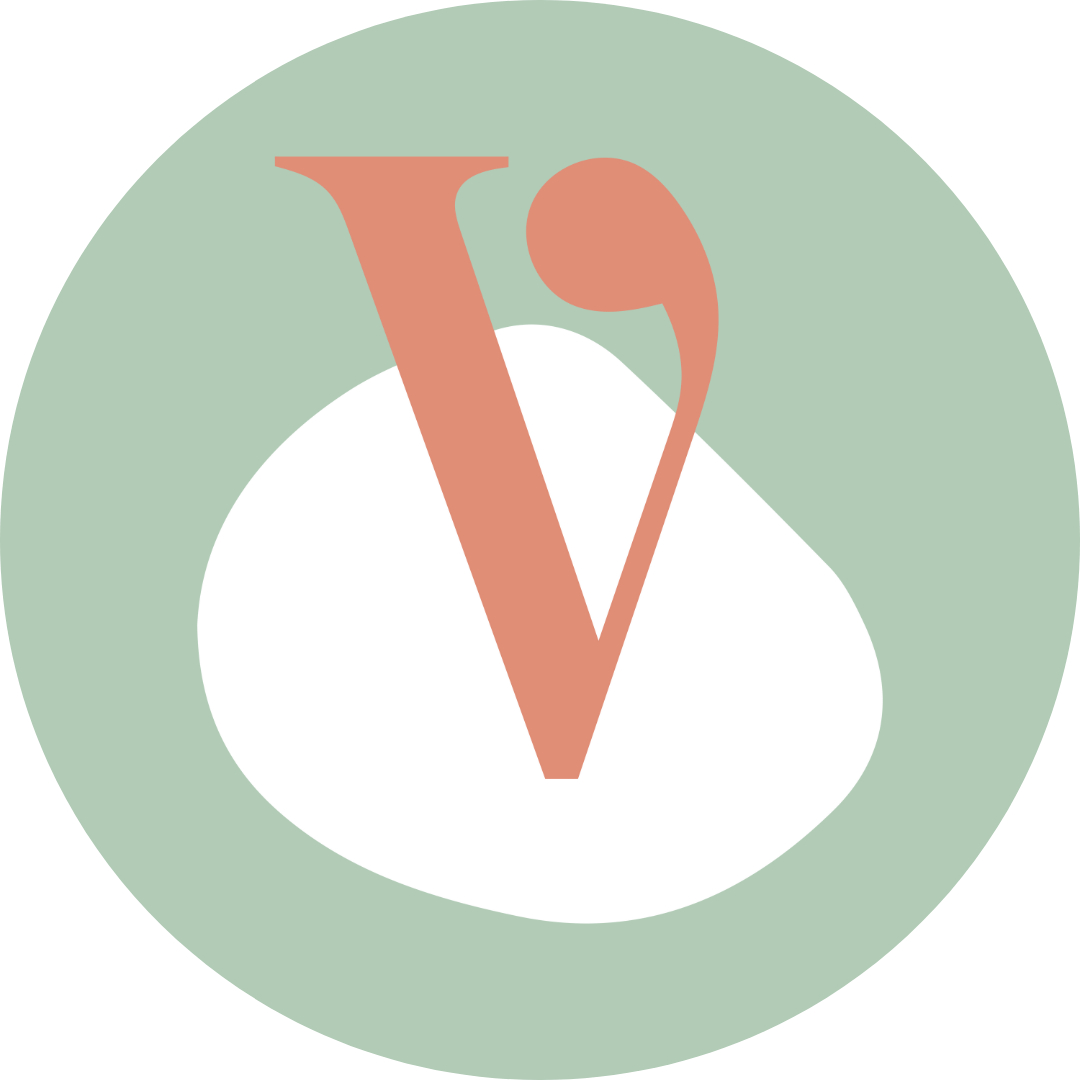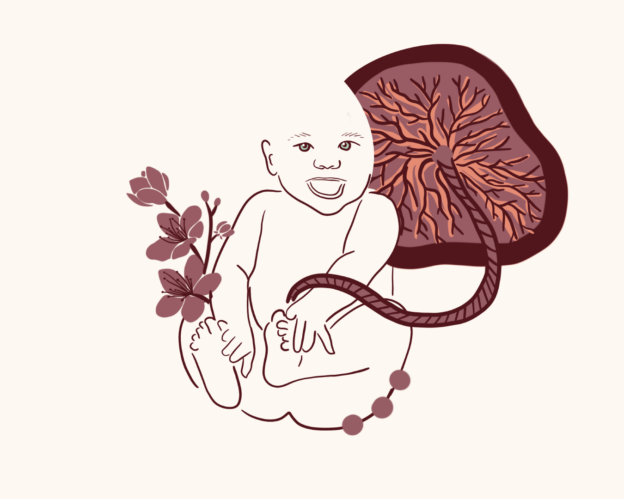Geschreven door Suzanne van Dijk en Margot van Dijk
Gepubliceerd op 15 januari 2022
Na de geboorte van de baby is de baring nog niet afgelopen: de placenta moet nog geboren worden. In Nederland wordt op veel plekken de geboorte van de placenta standaard ‘actief geleid’, waarbij er onder andere synthetische oxytocine wordt toegediend. Er zijn ook zorgverleners die een afwachtend beleid voeren rondom de geboorte van de placenta. De gedachte achter actief leiden is het voorkomen of verminderen van de kans op een fluxus (meer dan 1000 ml bloedverlies).
Maar wat is nu precies een normaal nageboortetijdperk? Wat is een fluxus? Wat houden de twee vormen van beleid rondom de geboorte van de placenta in en zijn er nog meer mogelijkheden? Op welke wetenschappelijke onderzoeken is dit beleid gebaseerd? Deze en meer vragen beantwoorden we in dit artikel.
- Begley, C. M., Guilliland, K., Dixon, L., Reilly, M., & Keegan, C. (2012). Irish and New Zealand midwives’ expertise in expectant management of the third stage of labour: the ‘MEET’ study. Midwifery, 28(6), 733–739. https://doi.org/10.1016/j.midw.2011.08.008
- Begley, C. M., Gyte, G. M., Devane, D., McGuire, W., Weeks, A., & Biesty, L. M. (2019). Active versus expectant management for women in the third stage of labour. The Cochrane database of systematic reviews, 2(2), CD007412.
- Belghiti, J., Kayem, G., Dupont, C., Rudigoz, R. C., Bouvier-Colle, M. H., & Deneux-Tharaux, C. (2011). Oxytocin during labour and risk of severe postpartum haemorrhage: a population-based, cohort-nested case-control study. BMJ open, 1(2), e000514. https://doi.org/10.1136/bmjopen-2011-000514
- Buckley S. J. (2011). Leaving well alone in the third stage of labour. Midwifery today with international midwife, (100), 30–32.
- Buckley, S. (2015, januari). Hormonal Physiology of Childbearing: Evidence and Implications for Women, Babies, and Maternity Care. Childbirth Connection. https://www.nationalpartnership.org/our-work/resources/health-care/maternity/hormonal-physiology-of-childbearing.pdf
- Botha M.C. 1968) The management of the umbilical cord in labour. South African Journal of Obstetrics and Gynaecology 16(2): 30-33.
- Combs, C. A., & Laros, R. K., Jr (1991). Prolonged third stage of labor: morbidity and risk factors. Obstetrics and gynecology, 77(6), 863–867.
- Davis, D., Baddock, S., Pairman, S., Hunter, M., Benn, C., Anderson, J., Dixon, L., & Herbison, P. (2012). Risk of severe postpartum hemorrhage in low-risk childbearing women in new zealand: exploring the effect of place of birth and comparing third stage management of labor. Birth (Berkeley, Calif.), 39(2), 98–105. https://doi.org/10.1111/j.1523-536X.2012.00531.x
- Dixon, L., Fletcher, L., Tracy, S., et al. (2009) Midwives care during the third stage of labour: An analysis of the New Zealand College of Midwives Midwifery Database 2004-2008. New Zealand College of Midwives Journal 41: 20-25.
- Dombrowski, M. P., Bottoms, S. F., Saleh, A. A., Hurd, W. W., & Romero, R. (1995). Third stage of labor: analysis of duration and clinical practice. American journal of obstetrics and gynecology, 172(4 Pt 1), 1279–1284. https://doi.org/10.1016/0002-9378(95)91493-5
- Dunn, P. M., Fraser, I. D., & Raper, A. B. (1966). Influence of early cord ligation on the transplacental passage of foetal cells. The Journal of obstetrics and gynaecology of the British Commonwealth, 73(5), 757–760. https://doi.org/10.1111/j.1471-0528.1966.tb06079.x
- Evidece based birth. (z.d.) Evidence on Pitcoin during the third stage of labor. Geraadpleegd op 29 december 2021, van https://evidencebasedbirth.com/evidence-on-pitocin-during-the-third-stage-of-labor/
- Fahy K. M. (2009). Third stage of labour care for women at low risk of postpartum haemorrhage. Journal of midwifery & women’s health, 54(5), 380–386. https://doi.org/10.1016/j.jmwh.2008.12.016
- Farmacotherapeutisch Kompas (2021, augustus). Zorginstituut Nederland. Oxytocine. Geraadpleegd op 15 januari 2022, van https://www.farmacotherapeutischkompas.nl/bladeren/preparaatteksten/o/oxytocine
- Gülmezoglu AM, Lumbiganon P, Landoulsi S, Widmer M, Abdel-Aleem H, Festin M, Carroli G, Qureshi Z, Souza JP, Bergel E, Piaggio G, Goudar SS, Yeh J, Armbruster D, Singata M, Pelaez-Crisologo C, Althabe F, Sekweyama P, Hofmeyr J, Stanton ME, Derman R, Elbourne D. Active management of the third stage of labour with and without controlled cord traction: a randomized, controlled, non-inferiority trial. Lancet 2012: 5;379(9827):1721-7
- Herman, A., Weinraub, Z., Bukovsky, I., Arieli, S., Zabow, P., Caspi, E., & Ron-El, R. (1993). Dynamic ultrasonographic imaging of the third stage of labor: new perspectives into third-stage mechanisms. American journal of obstetrics and gynecology, 168(5), 1496-1499.
- Herman, A. (2000). Complicated third stage of labor: time to switch on the scanner. Ultrasound in obstetrics & gynecology: the official journal of the International Society of Ultrasound in Obstetrics and Gynecology, 15(2), 89-95.
- Herman, A., Zimerman, A., Arieli, S., Tovbin, Y., Bezer, M., Bukovsky, I., & Panski, M. (2002). Down–up sequential separation of the placenta. Ultrasound in Obstetrics and Gynecology: The Official Journal of the International Society of Ultrasound in Obstetrics and Gynecology, 19(3), 278-281.
- Hofmeyr, G. J., Abdel-Aleem, H., & Abdel-Aleem, M. A. (2008). Uterine massage for preventing postpartum haemorrhage. The Cochrane database of systematic reviews, (3), CD006431. https://doi.org/10.1002/14651858.CD006431.pub2
- Insel T. R. (2010). The challenge of translation in social neuroscience: a review of oxytocin, vasopressin, and affiliative behavior. Neuron, 65(6), 768–779. https://doi.org/10.1016/j.neuron.2010.03.005
- Jans, S. M., Herschderfer, K. C., van Diem, M. T., Aitink, M., Rijnders, M., van der Pal-de Bruin, K., & Buitendijk, S. E. (2016). The LENTE Study: The Effectiveness of Prophylactic Intramuscular Oxytocin in the Third Stage of Labor Among Low-Risk Women in Primary Care Midwifery Practice: A Randomized Controlled Trial. International Journal of Childbirth, 6(3), 173-182.
- Jobst, A., Krause, D., Maiwald, C., Härtl, K., Myint, A. M., Kästner, R., Obermeier, M., Padberg, F., Brücklmeier, B., Weidinger, E., Kieper, S., Schwarz, M., Zill, P., & Müller, N. (2016). Oxytocin course over pregnancy and postpartum period and the association with postpartum depressive symptoms. Archives of women’s mental health, 19(4), 571–579. https://doi.org/10.1007/s00737-016-0644-2
- Kristjansdottir, H. L., Bodvarsdottir, S. P., & Sigurjonsdottir, H. A. (2011). Sheehan’s syndrome in modern times: a nationwide retrospective study in Iceland. European journal of endocrinology, 164(3), 349–354. https://doi.org/10.1530/EJE-10-1004
- Lazarus, J. V., & Lalonde, A. (2005). Reducing postpartum hemorrhage in Africa. International Journal of Gynecology & Obstetrics, 88(1), 89-90.
- Levy, V. (1990). The midwife’s management of the third stage of labour. In: Alexander J., Levy Vl, Roch S., (eds). Midwifery Practice: Intrapartum Care A Research Based Approach. London: Macmillan.
- LVOV: Begeleiding van de baring in A.a.v. (2021).
- Magann, E. F., Evans, S., Chauhan, S. P., Lanneau, G., Fisk, A. D., & Morrison, J. C. (2005). The length of the third stage of labor and the risk of postpartum hemorrhage. Obstetrics and gynecology, 105(2), 290–293. https://doi.org/10.1097/01.AOG.0000151993.83276.70
- Masuzawa, Y., Kataoka, Y., Fujii, K., & Inoue, S. (2018). Prophylactic management of postpartumhaemorrhage in the third stage of labour: an overview of systematic reviews. Systematic reviews, 7(1), 156. https://doi.org/10.1186/s13643-018-0817-3
- Moberg, K., Uvnäs-Moberg, K., & Boer, A. M. (2007). De Oxytocine factor. Thoeris.
- Moura, D., Canavarro, M. C., & Figueiredo-Braga, M. (2016). Oxytocin and depression in the perinatal period-a systematic review. Archives of women’s mental health, 19(4), 561–570. https://doi.org/10.1007/s00737-016-0643-3
- NICE: National Institute for Health and Care Excellence. (2017). Intrapartum care for healthy women and babies. London: NICE. Geraadpleegd op 29 december 2021, van https://www.nice.org.uk/guidance/cg190/chapter/Recommendations#third-stage-of-labour
- NTVG. Toename fluxus post partum ook in Nederland. (2016, 22 augustus). Nederlands Tijdschrift voor Geneeskunde. Geraadpleegd op 13 januari 2022, van https://www.ntvg.nl/artikelen/toename-fluxus-post-partum-ook-nederland
- NVOG. (2015). Hemorraghia postpartum (HPP). https://www.nvog.nl/wp-content/uploads/2018/02/Hemorrhagia-postpartum-HPP-3.0-14-11-2013.pdf
- Perined, Utrecht, 2021, geraadpleegd via: www.peristat.nl, op datum 28 december 2021.
- Prins, M., van Roosmalen, J., Smit, Y., Scherjon, S., & van Dillen, J. (2019). Praktische verloskunde. Houten: Bohn Stafleu van Loghum
- Reed, R., Gabriel, L., & Kearney, L. (2019). Birthing the placenta: women’s decisions and experiences. BMC Pregnancy and Childbirth, 19(1). https://doi.org/10.1186/s12884-019-2288-5
- Reed, R (2021, 26 december). An actively managed placenta may be the best option for most women. MidwifeThinking. Geraadpleegd op 16 januari 2022, van https://midwifethinking.com/2015/03/11/an-actively-managed-placental-birth-might-be-the-best-option-for-most-women/
- Schutte, J. M., Steegers, E. A., Schuitemaker, N. W., Santema, J. G., de Boer, K., Pel, M., Vermeulen, G., Visser, W., van Roosmalen, J., & Netherlands Maternal Mortality Committee (2010). Rise in maternal mortality in the Netherlands. BJOG : an international journal of obstetrics and gynaecology, 117(4), 399–406. https://doi.org/10.1111/j.1471-0528.2009.02382.x
- Soltani, H., Hutchon, D. R., & Poulose, T. A. (2010). Timing of prophylactic uterotonics for the third stage of labour after vaginal birth. The Cochrane database of systematic reviews, (8), CD006173. https://doi.org/10.1002/14651858.CD006173.pub2
- Takács, L., Seidlerová, J. M., Štěrbová, Z., Čepický, P., & Havlíček, J. (2019). The effects of intrapartum synthetic oxytocin on maternal postpartum mood: findings from a prospective observational study. Archives of women’s mental health, 22(4), 485–491. https://doi.org/10.1007/s00737-018-0913-3
- Thul, T. A., Corwin, E. J., Carlson, N. S., Brennan, P. A., & Young, L. J. (2020). Oxytocin and postpartumdepression: A systematic review. Psychoneuroendocrinology, 120, 104793. https://doi.org/10.1016/j.psyneuen.2020.104793
- Wickham, S. & Edwards, N. (2018). Birthing your placenta. Avebury and Edinburgh. Birthmoon Creations.
- World Health Organization. (2017). Guideline: delayed umbilical cord clamping for improved maternal and infant health and nutrition outcomes. World Health Organization.
- Zwart, J. J., Richters, J. M., Ory, F., de Vries, J. I., Bloemenkamp, K. W., & van Roosmalen, J. (2008). Severe maternal morbidity during pregnancy, delivery and puerperium in the Netherlands: a nationwide population-based study of 371,000 pregnancies. BJOG : an international journal of obstetrics and gynaecology, 115(7), 842–850. https://doi.org/10.1111/j.1471-0528.2008.01713.x
>

Reacties
Je moet inloggen om een reactie te kunnen plaatsen.



Het valt me op dat er geen beleid is waarbij wordt afgewacht met de navelstreng verbreken totdat de placenta geboren is (ik ga zo ook nog het stuk over afnavelen lezen!). Kan het intact laten van de navelstreng invloed hebben op (de tijdsduur van) de geboorte van de placenta en (daarmee?) op fluxus risico’s?
In het afnavelen artikel zie ik nu:
Vroeg afnavelen geeft volgens onderzoek:
– Geen verschil in hoeveelheid bloedverlies;
– Geen verschil in hoe vaak een bloedtransfusie of manuele placentaverwijdering nodig was;
– Geen verschil in de tijdsduur van het nageboortetijdperk (de tijd tussen geboorte van het kind en geboorte van de placenta).
Is dit dan in vergelijking met ‘laat’ of ‘later’ afnavelen (hoe laat/lang wachten?) én actief placenta beleid? Of..? (Misschien vertelt dat onderzoek dat ook niet…)
PS Bij dit artikel waaronder ik nu een reactie schrijf, over nageboorte actief of afwachten, kon ik de bronnen niet vinden! Ik wilde onderzoeken nazoeken om nog wat na te kijken.
In vergelijking met laat afnavelen inderdaad, waarbij niet altijd duidelijk is hoe ‘laat’ dat dan is. In sommige onderzoeken noemen ze namelijk 3 minuten al ‘laat’…
Ze hebben het niet bijgehouden in de onderzoeken, wat niet betekent dat het niet is gebeurd. Ik vermoed dat er veel/meer vroedvrouwen zijn die altijd wachten met afnavelen totdat de placenta er is. Het zou kunnen dat het invloed heeft, maar ik ken geen onderzoeken daarover. De literatuur vind je aan het begin van het artikel, bij de introductie! Of bedoel je dat je een verwijzing mist?
Gevonden (de literatuur!)
Huh nee, toch niet.. Ik kan bij dit artikel de literatuurlijst dus nergens vinden?
Je hebt gelijk Jilke! Ik heb nu de literatuurlijst toegevoegd (bovenaan het artikel kan je op ‘literatuur’ klikken)